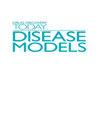人类神经元模拟衰老:老了最好吃。
Q3 Pharmacology, Toxicology and Pharmaceutics
引用次数: 16
摘要
随着人类年龄的增长,与年龄有关的疾病越来越多,衰老已成为近年来研究的一个主要焦点。缺乏拟合的衰老模型,特别是在获得人类大脑样本有限的神经系统疾病中,突出了直接转化为诱导神经元(in)是克服这一挑战的重要方法。与iPSC重编程及其相应的细胞年轻化相反,iNs的产生使我们能够在整个转换过程及之后保留衰老特征。在这篇综述中,我们探讨了不同的细胞重编程方法,针对年龄相关的神经退行性疾病,并讨论了不同的方法,进展和局限性。本文章由计算机程序翻译,如有差异,请以英文原文为准。
Human neurons to model aging: A dish best served old
With the advancing age of humans and with it, growing numbers of age-related diseases, aging has become a major focus in recent research. The lack of fitting aging models, especially in neurological diseases where access to human brain samples is limited, has highlighted direct conversion into induced neurons (iN) as an important method to overcome this challenge. Contrary to iPSC reprogramming and its corresponding cell rejuvenation, the generation of iNs enables us to retain aging signatures throughout the conversion process and beyond. In this review, we explore different cell reprogramming methods in light of age-associated neurodegenerative diseases and discuss different approaches, advances, and limitations.
求助全文
通过发布文献求助,成功后即可免费获取论文全文。
去求助
来源期刊

Drug Discovery Today: Disease Models
Pharmacology, Toxicology and Pharmaceutics-Drug Discovery
自引率
0.00%
发文量
0
期刊介绍:
Drug Discovery Today: Disease Models discusses the non-human experimental models through which inference is drawn regarding the molecular aetiology and pathogenesis of human disease. It provides critical analysis and evaluation of which models can genuinely inform the research community about the direct process of human disease, those which may have value in basic toxicology, and those which are simply designed for effective expression and raw characterisation.
 求助内容:
求助内容: 应助结果提醒方式:
应助结果提醒方式:


